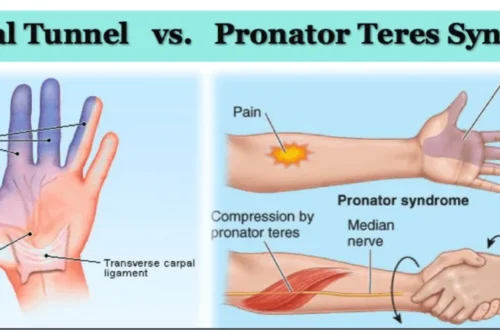In modern care environments, whether in a hospital, a nursing home, or a private assisted-living setting, the choice of equipment can have a profound impact on comfort, hygiene, and safety. One piece of equipment that often gets overlooked but deserves attention is the hygienstol (plural: hygienstolar). This term is used in Sweden for specialized hygiene chairs / commode and shower-toilet chairs that help individuals with limited mobility perform essential hygiene tasks — toileting, showering, etc.
Throughout this article you’ll discover: what hygienstolar are, their key features, how to select right ones, their benefits, how to maintain them, common application settings, and what current market trends are shaping their future.
Understanding Hygienstolar – Definition, Purpose and Scope
Let’s begin by clarifying exactly what a hygienstol is, and why it has become a staple in care and health-care settings.
Definition & purpose
A hygienstol is a chair designed specifically for hygiene-related activities. It might double as a toilet chair (i.e., commode), a shower chair, or a transfer-aid chair in bathing/toilet facilities. Swedish supplier catalogs describe them as “dusch- och toalettsstolar” (shower and toilet chairs) and list them under “Hygienstolar” in their product lines.
Thus the word can be thought of as “hygiene chairs” in English.
Why they matter
For people with reduced mobility (due to age, disability, injury, or illness), performing basic hygiene tasks independently and safely is a major challenge. Hygienstolar help by:
-
Providing stable and safe seating support for toileting or showering.
-
Facilitating transfers from wheelchairs or beds.
-
Enabling easier cleaning, drainage, and hygienic design in wet environments.
-
Reducing risk of falls, skin damage, and discomfort during hygiene care.
For care providers, they also reduce physical strain, improve workflow, and raise hygiene standards. One region’s documentation even highlighted changes in supply of “mobila hygienstolar” (mobile hygiene chairs) to improve efficiency in care.
Scope of use
Hygienstolar are found in many settings:
-
Home care (for individuals needing assistance).
-
Nursing homes and assisted‐living facilities.
-
Hospitals and rehabilitation centres.
-
Public washrooms or specialised hygiene rooms.
Because they are specialised furniture/hygiene-equipment, they often meet regulatory or medical-device standards. For example, a Swedish product catalogue describes their model as one of the first “hygienstolar” approved according to ISO 17966:2016.
In short: hygienstolar are more than a commode or shower stool — they are specially designed aids to support dignity, hygiene, safety and ergonomics in the care of individuals with hygiene support needs.
Key Features & Design Considerations of Hygienstolar
When evaluating hygienstolar, it is essential to know which features matter. Not all chairs labelled “hygien” are equal. Here are the major design and functional considerations:
Material & hygiene-friendly surfaces
Because these chairs are used in areas that require cleaning and often get wet, their materials must be resistant to corrosion, water damage, microbial growth, and cleaning agents.
For example, a product catalogue notes: “EASY™ … is made in corrosion-free material and its electronics withstand spray-water (enclosure class X5).”
Smooth surfaces, minimal joints, and drainage holes all support hygiene.
Adjustable height / tilt / positioning
Good hygienstolar allow adjustment of seat height, tilt (angle of the seat/back), and other positioning to fit different users and tasks. For instance, height adjustability allows easier transfers from bed or wheelchair.
The same catalogue points out that their model has “telescopic columns for height/lowering” making it fit for most users.
Drainage / openings
Since many of these chairs are used for toileting or showering, seats often have openings (front, back or centre) for hygiene access, drainage or commode buckets. A Swedish supplier lists models with a “sits with opening for personal hygiene” as a specific feature.
Mobility / wheels / brakes
Many hygiene chairs are mobile: equipped with wheels (often locking), designed to move in wet rooms, to be transferred/rolled over a toilet, or moved between locations. For example, a Swedish product page lists a “Hygienstol på hjul … bromsar på alla fyra hjulen.”
Use case adaptation (children, bariatric, heavy users)
Hygienstolar come in many variants — for children, for heavy users (bariatric), for minimal space environments. For example, one supplier lists a “Raz-CAT hygienstol for children, youth and adults” in their lineup.
Safety, comfort & ergonomics
Comfort and ergonomics matter a lot — for the user’s dignity and the care provider’s ease. The seating surface, back support, arm/fotstöd (armrests/footrests), and ease of transfer all play a role. From the catalogue: “The ergonomic seat minimises pressure on ischial tuberosities, tendons and blood vessels.”
Maintenance & durability
Since these chairs are used intensively in hygiene settings, they must be easy to clean and maintain, and durable. Features such as removable covers, easily accessible parts, serviceability matter. The Swedish supplier Euforia emphasises “Enkel montering och rengöring” (easy assembly and cleaning).
In summary: when choosing a hygienstol, focus on hygiene-compatible materials, adjustability, mobility, appropriate user sizing, safety and comfort, and ease of maintenance. Getting this right ensures the chair will perform effectively, safely and for many years.
How to Choose the Right Hygienstol for Your Needs
Selecting the right hygienstol requires a structured approach. Below are steps and tips to make sure you get the correct model for your specific situation.
1. Assess the user’s needs
First ask: What is the user’s mobility? Can they transfer independently? Are they seated most of the time or standing before/after? What is their weight and height? Do they have special needs (e.g., postural support, skin sensitivity)?
For example, if the user is bariatric, you need a model rated for higher weight and wider seat. The Wolturnus website lists a model “RAZ-AT600 … for heavy users”.
2. Define the usage environment
Where will the hygienstol be used? A private home bathroom? Hospital ward? Shower room? Will it be moved between rooms? Will it be used in a wet/damp shower environment?
For example, Etac lists their mobile shower-toilet chairs with focus on “wet-room use”, small footprints, assistive tilt features.
3. Match features to needs
Based on user & environment, pick features:
-
Height adjustability or tilt if user needs transfer support.
-
Open seat or commode bucket if toileting.
-
Wheels/brakes if mobility is needed.
-
Armrests/footrests depending on transfers and support.
-
Material corrosion resistance if used in shower.
For example, Euforia lists models with “avtagbara fotstöd, bromsar, sits med öppning”.
4. Check hygiene & maintenance
Because hygiene is a core purpose, check cleaning ease: smooth surfaces, minimal seams, drainage holes, ability to detach parts, materials rated for disinfectants. The product catalogue states their electronics are “corrosion‐free” and designed for cleaning.
5. Budget and value
While cost is important, consider lifetime value: durability, serviceability, adaptability (can chair be used for different users), and what additional accessories cost.
The Swedish supplier lists a wide cost range and varying specs.
6. Compliance and standards
Especially for care facilities, make sure chair meets relevant safety and device standards. As noted earlier, some models are approved according to ISO 17966:2016.
By following these steps, you will increase the chances of selecting the right hygienstol — one that is safe, comfortable, hygienic and cost-effective.
Benefits of Hygienstolar – For Users, Caregivers and Facilities
Investing in a high-quality hygienstol brings many advantages. Let’s break them down by stakeholder.
For the user
-
Increased dignity and independence: A proper chair designed for hygiene allows users to perform toileting or showering more safely and with less assistance.
-
Improved comfort and posture: Ergonomic features reduce pressure on body parts, prevent discomfort and skin issues.
-
Reduced risk of injury: Secure seating with brakes, adjusted height, a dedicated design reduces fall or slip risk in wet areas.
For caregivers / staff
-
Better ergonomics: With adjustable height/tilt, caregivers can assist from correct posture, reducing strain and injury risk.
-
Efficiency gains: Easier transfers, less time fussing with unsuitable chairs, improved routines.
-
Hygiene assurance: With easy-to-clean surfaces, minimal seams, drains, the risk of contamination is reduced, and cleaning is faster.
For facilities / organisations
-
Safety compliance: Using proper hygiene chairs helps meet care regulations and hygiene protocols.
-
Reduced maintenance costs: Durable chairs with appropriate materials last longer and require fewer repairs or replacements.
-
Better user satisfaction: High-quality hygiene equipment improves user experience, which matters in care settings.
-
Flexibility: Some models are multi-use (toilet + shower) or adjustable for different users, reducing the need for multiple specialised chairs. For instance, the product catalogue mentions the ability to reduce the number of chair types by using adaptable models.
In summary: the benefits cover all levels — from the individual user’s comfort and dignity, to caregiver efficiency, to organisation cost-effectiveness and hygiene standards. Hygienstolar therefore offer strong value beyond their initial cost.
Maintenance, Hygiene Protocols and Lifespan of Hygienstolar
To get maximum value from a hygienstol, proper maintenance and hygiene protocols are crucial. Here’s how to manage and maintain them effectively.
Daily cleaning and hygiene
-
Clean the chair after every use (especially in shared or institutional environments).
-
Use approved disinfectants suitable for medical/hygiene furniture. Avoid harsh scrubbing that might damage surfaces.
-
Pay special attention to crevices, hinges, wheels/brakes, drainage holes. One supplier emphasises “simple cleaning, minimal tools required”.
-
If the chair is used in a shower environment, ensure that water drainage, no standing water, and material corrosion resistance are regularly inspected.
Periodic maintenance
-
At least monthly (or per manufacturer’s guidance), check mechanical components: brakes, wheels, tilt/height mechanisms, arm/footrests.
-
Inspect for signs of corrosion, wear, loose screws, damaged upholstery.
-
Replace worn parts promptly — e.g., cushions, covers, wheels — to preserve safety and hygiene.
-
Maintain documentation/log of servicing. For care facilities, this is important for compliance.
Expected lifespan and when to replace
-
Depending on usage intensity, quality of materials, and maintenance, a hygienstol can last many years.
-
But heavy use in institutional environments plus exposure to water/chemicals can shorten lifespan.
-
If you observe repeated faults, corrosion, frame deformation, or hygiene issues (e.g., inadequate drainage, cracks), it’s time to replace.
The supplier GATE emphasises their products as “your best investment” implying longer lifetime when matched correctly.
Hygiene protocols specific to care settings
-
For shared use chairs, disinfect between users.
-
If used for toileting, clean and disinfect bucket or commode pan thoroughly.
-
In shower use, ensure water jets, jets of cleaning agents, and drainage meet protocols.
-
Have a schedule and checklist for staff to follow to ensure consistent cleaning.
By maintaining your hygienstolar well, you ensure reliability, longevity, and safety — which translates into cost savings and better user care over time.
Trends & Future Outlook for Hygienstolar
The field of hygiene chairs is evolving. Let’s look at what the market is doing and what future-oriented features are emerging.
Material innovation & corrosion resistance
As chairs are increasingly used in moist environments (showers, wet rooms), manufacturers are using advanced materials – corrosion-free metals, antimicrobial plastics, fully sealed electronics. For example, GATE describes their model as having electronics that “tolerates spray-water (class X5)”.
Adaptability & multi-user design
Rather than single-purpose chairs, the trend is toward chairs that can serve different users and tasks, reducing inventory. As the product catalogue says: “since all models fit most users regardless of height/weight, you can reduce number of types”.
Smart/connected features
While still emerging, expect features like sensor-monitoring of seat use, alerts for cleaning/servicing, tilt adjustment logs, and integration into facility management systems. A blog on “smart seating” in hygiene context lists these as upcoming innovations.
Focus on user dignity & design
Beyond mere functionality, chair design is emphasizing user comfort, aesthetics, dignity and inclusion (especially for children, adults with disabilities, heavy users). The availability of children’s/ youth models (see Raz-CAT) illustrates this.
Regulatory & supply chain changes
Healthcare systems are standardising equipment procurement, focusing on cost-effectiveness, ergonomics and infection control. For example, Region Västmanland described changes in their hygienstol assortment.
Environmental/sustainability concerns
As with many healthcare products, there is increasing attention to eco-friendly materials, recyclability, and life-cycle analysis. While specific data for hygienstolar is less visible, the general furniture/medical-equipment market is moving in that direction.
In essence: the hygienstolar market is moving toward smarter, more adaptable, safer, more user-centric and hygiene-optimised chairs. For procurement professionals and care facilities this means staying updated on new features and standards is important.
Conclusion
If you’re in a care-giving, facility-management, or home-care environment, paying attention to the hygienstol you provide is absolutely worth it. These chairs aren’t just furniture — they are critical tools that impact user safety, dignity, hygiene, caregiver ergonomics, and overall workflow efficiency.
Here are the key take-aways:
-
Hygienstolar are specialised hygiene and toileting chairs designed for safe, hygienic use.
-
Important features include hygiene-friendly materials, adjustability (height/tilt), drainage/openings, mobility/brakes, and suitability for different user types.
-
Choose a chair after assessing user needs, environment, features required, hygiene and maintenance demands, budget and compliance.
-
Proper maintenance and cleaning are essential to ensure longevity, hygiene and safety.
-
The market is evolving toward more adaptable, smart, comfort-oriented and hygienic designs.
Choosing the right hygienstol isn’t a minor decision — it’s one that affects daily life, health outcomes and operational efficiency. Make the choice carefully, invest in quality, and maintain it well.
FAQs
Q1: Is “hygienstolar” just a Swedish word for commode chair?
Yes, in Swedish “hygienstol” refers broadly to hygiene chairs (often toileting or shower chairs) used in care contexts. But it generally implies higher functionality and hygiene design than a simple commode.
Q2: Can a hygienstol be used in a standard home bathroom?
Absolutely — many models are intended for home use (especially for individuals with reduced mobility). Just ensure the model is sized correctly, has appropriate drainage/opening if needed, and materials are suitable for the bathroom environment.
Q3: What is the normal lifespan of a hygienstol?
That depends on usage intensity, environment (wet vs dry), materials, and maintenance. With good care, high-quality chairs can last many years. But heavy use in wet rooms may shorten life.
Q4: Do hypertrophic / bariatric users need special hygienstolar?
Yes. For heavier users you’ll need chairs rated for higher weight, wider seats, stronger frames and possibly additional features. You will find models such as Raz-AT600 for heavier users.
Q5: How often should a hygienstol be cleaned or serviced in an institutional setting?
Cleaning: after each use if shared, or daily at minimum. Servicing: monthly or quarterly depending on usage, checking brakes, wheels, mechanisms, upholstery, corrosion. Maintaining logs is best practice.





